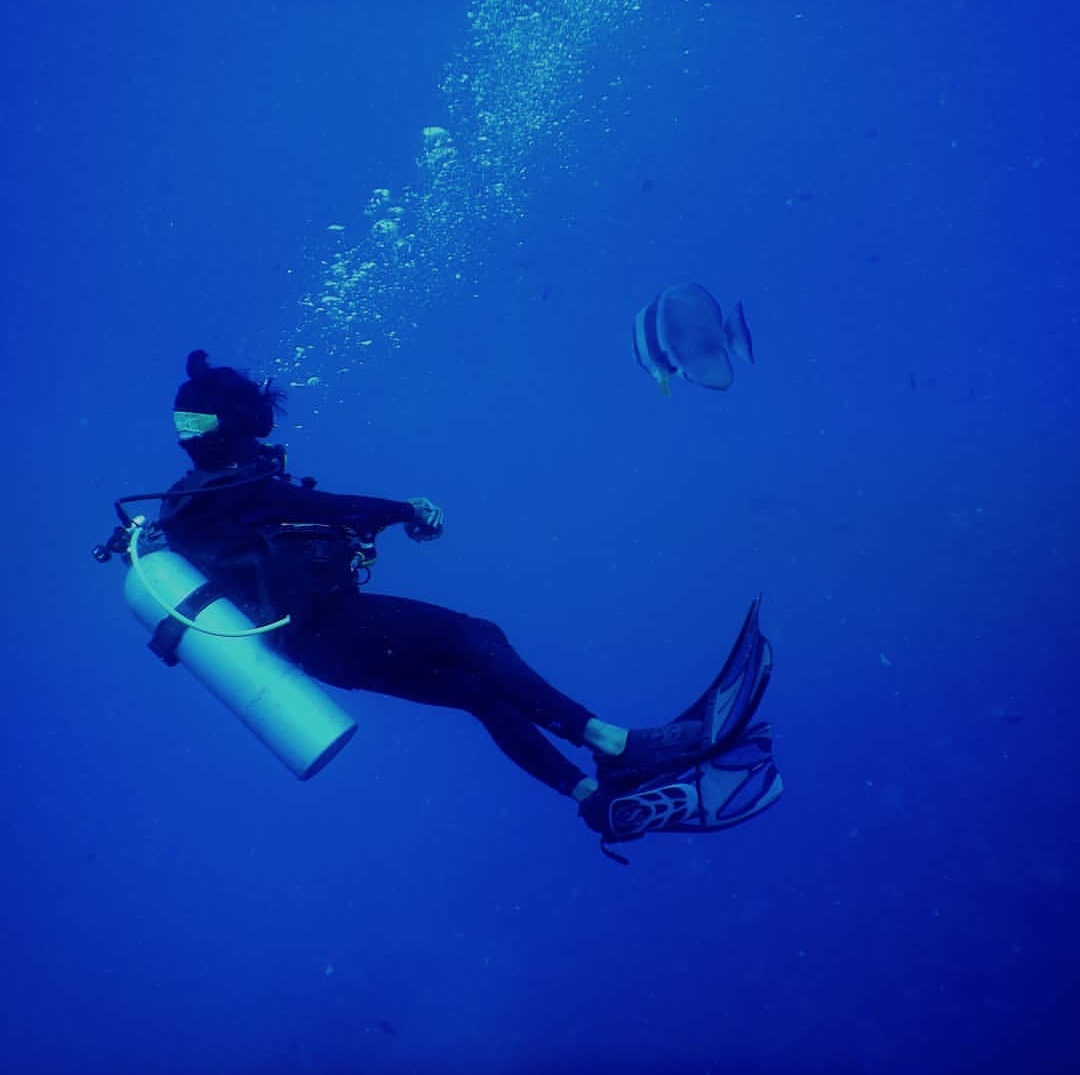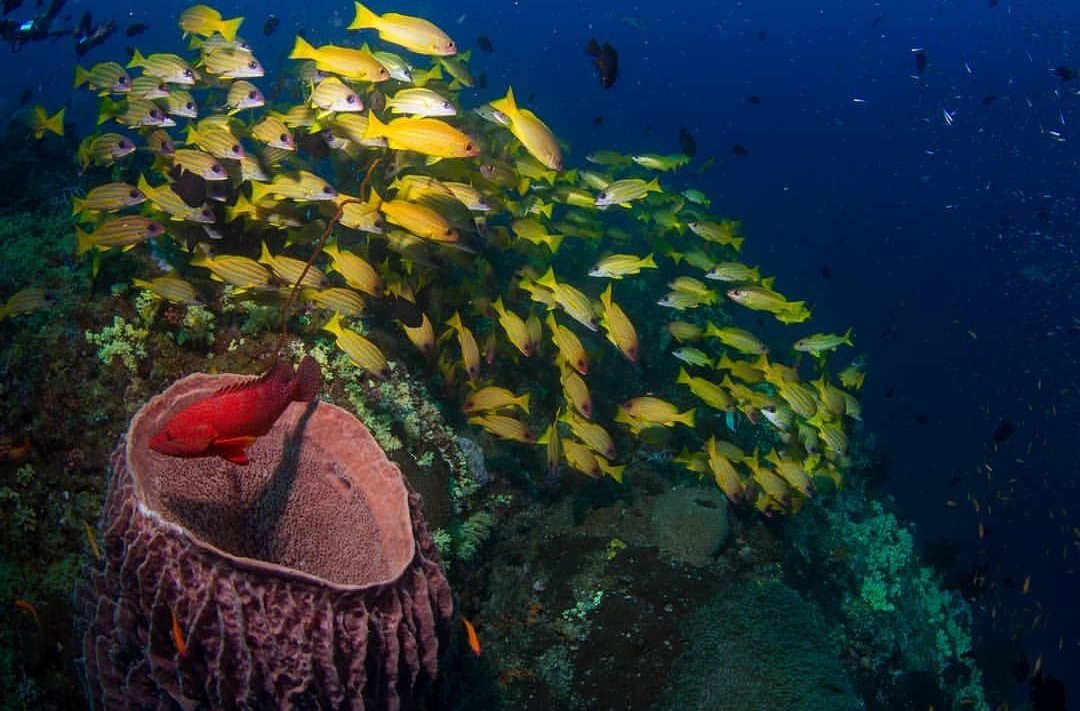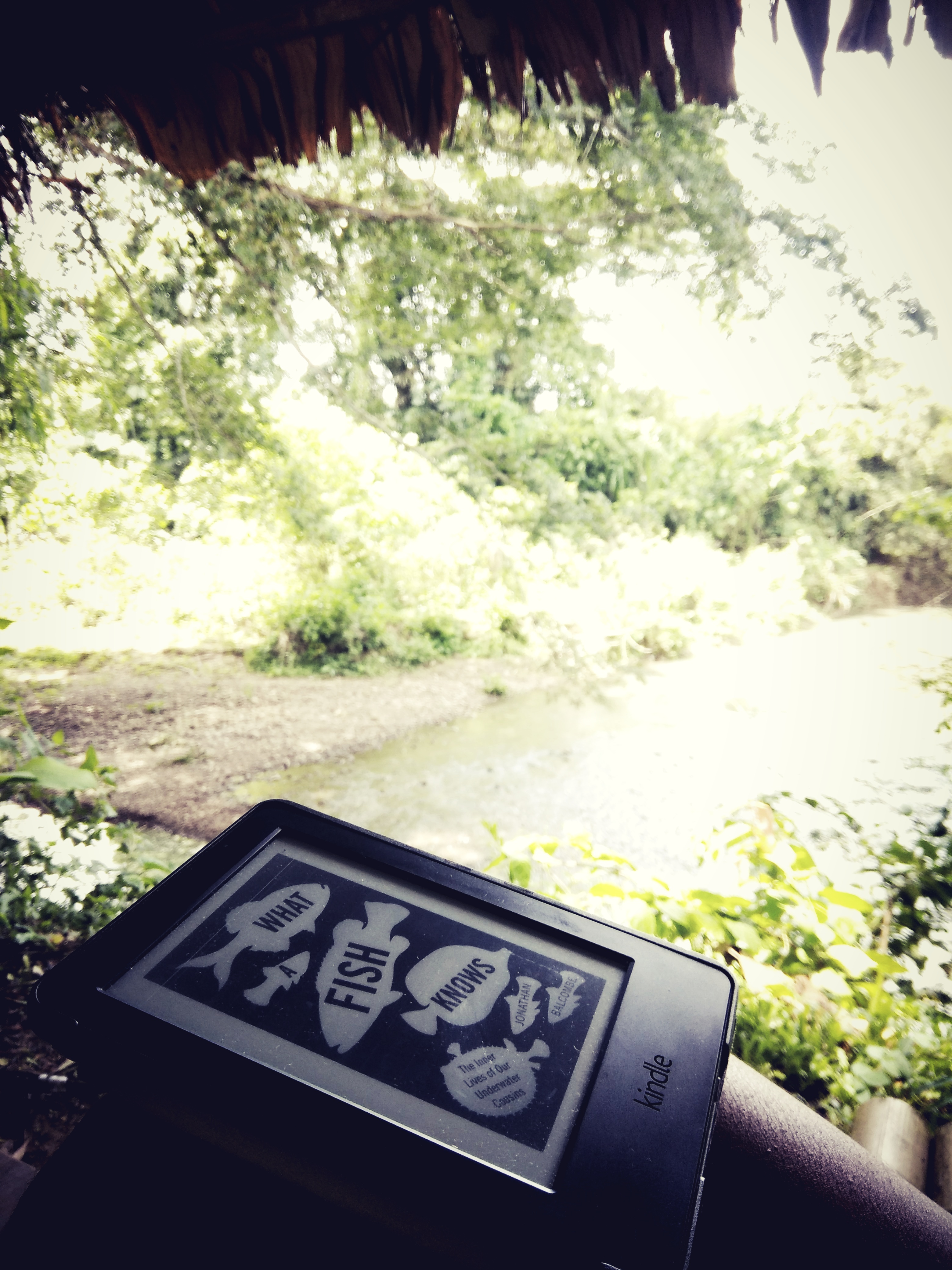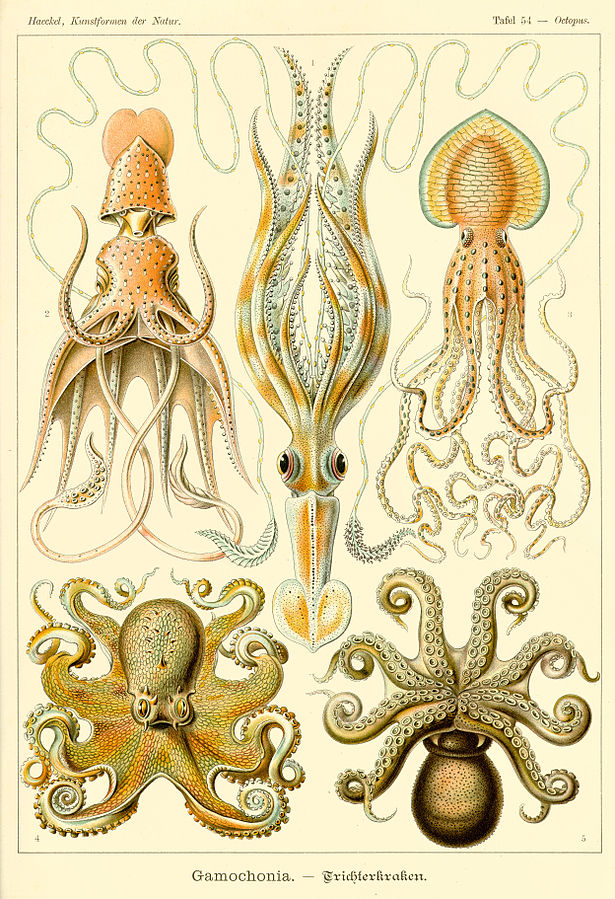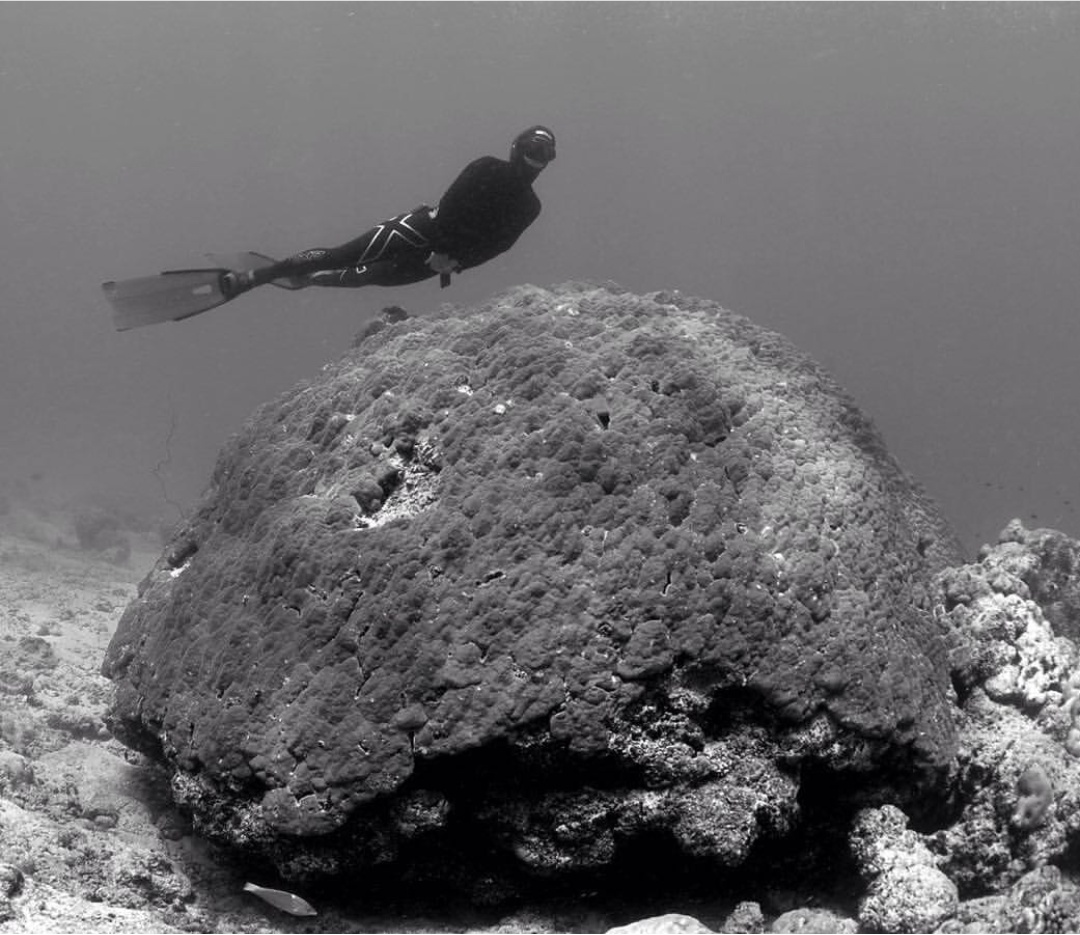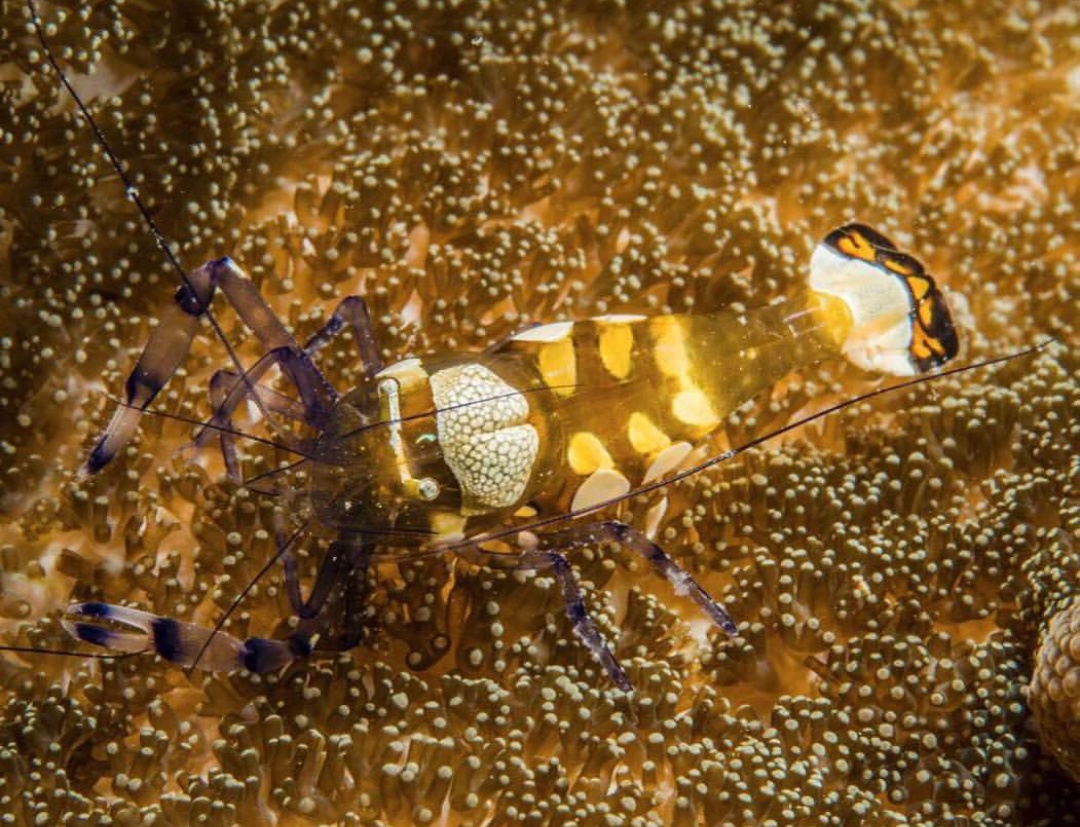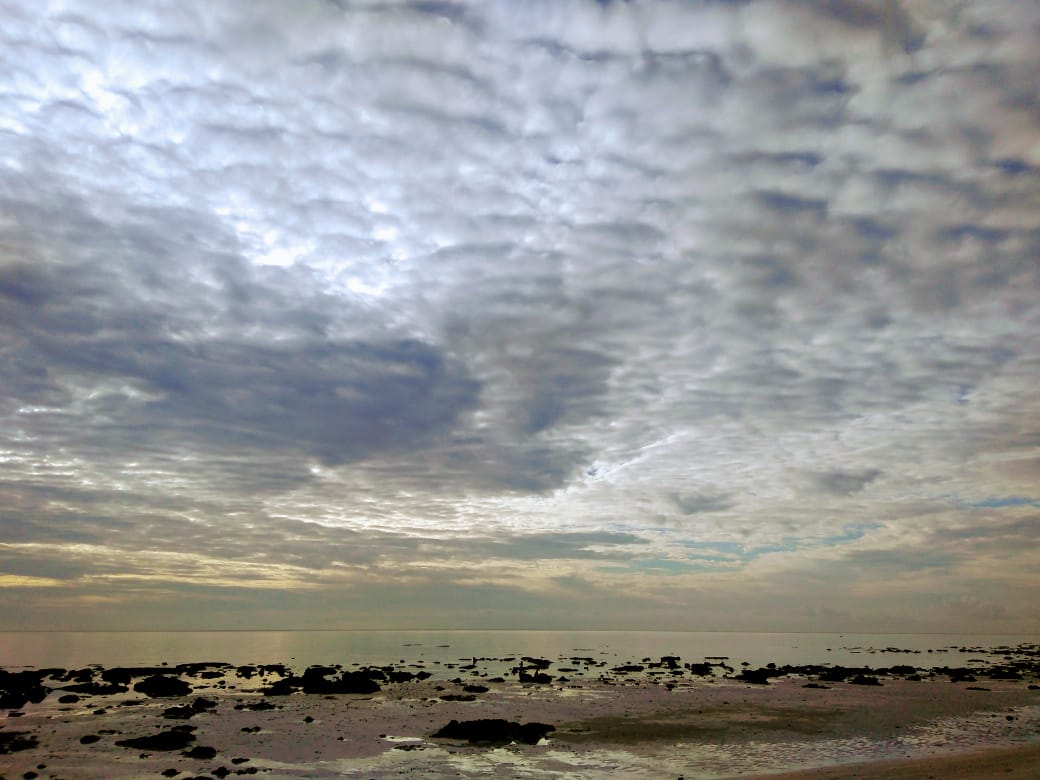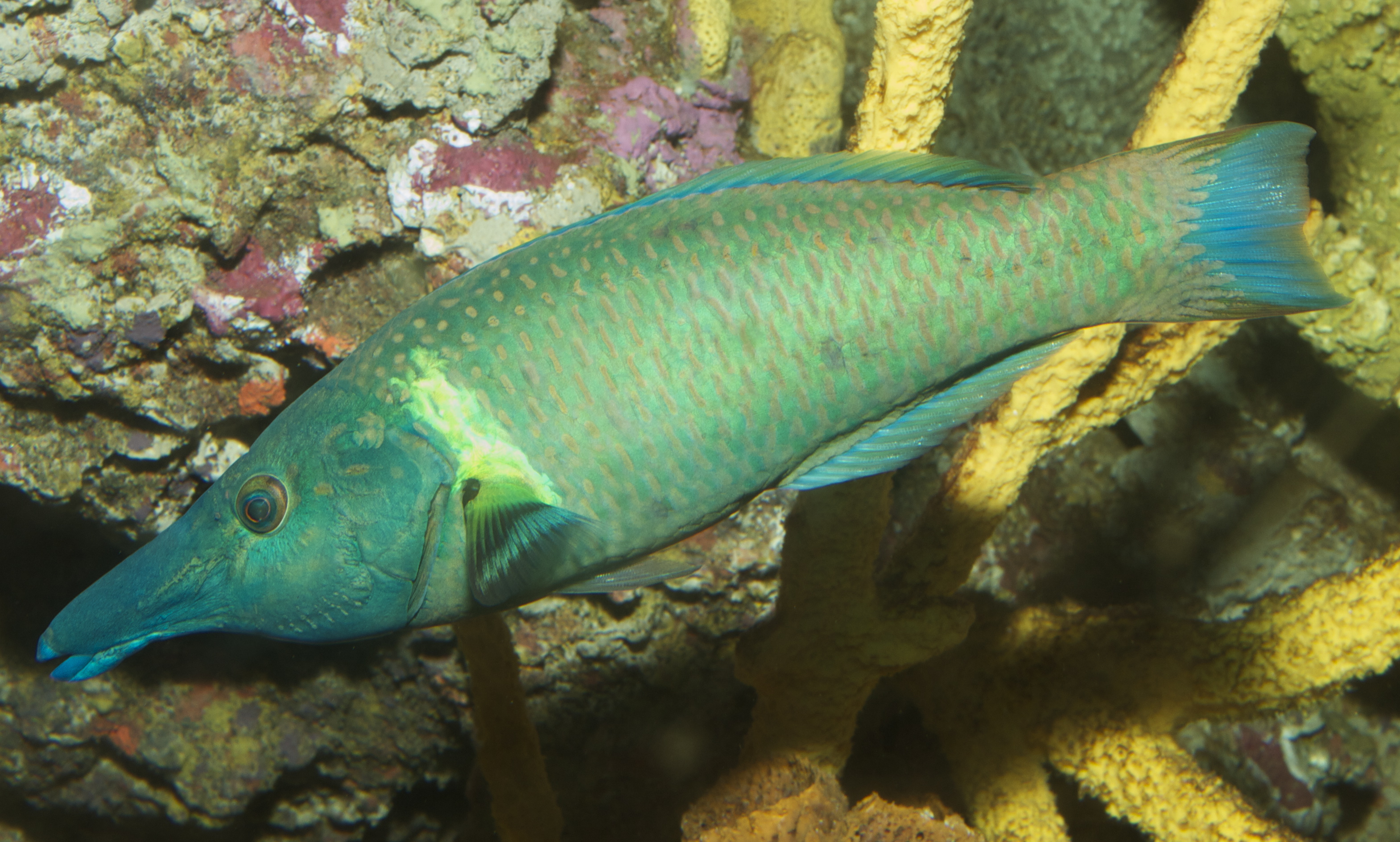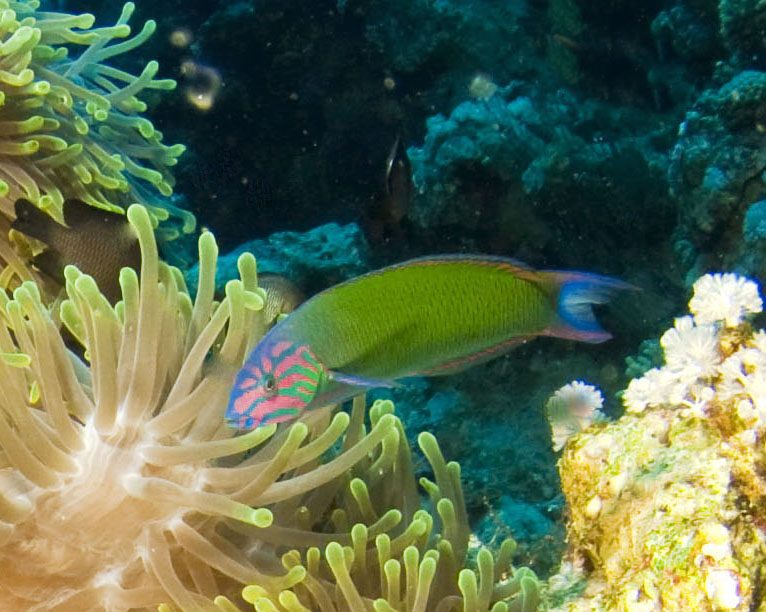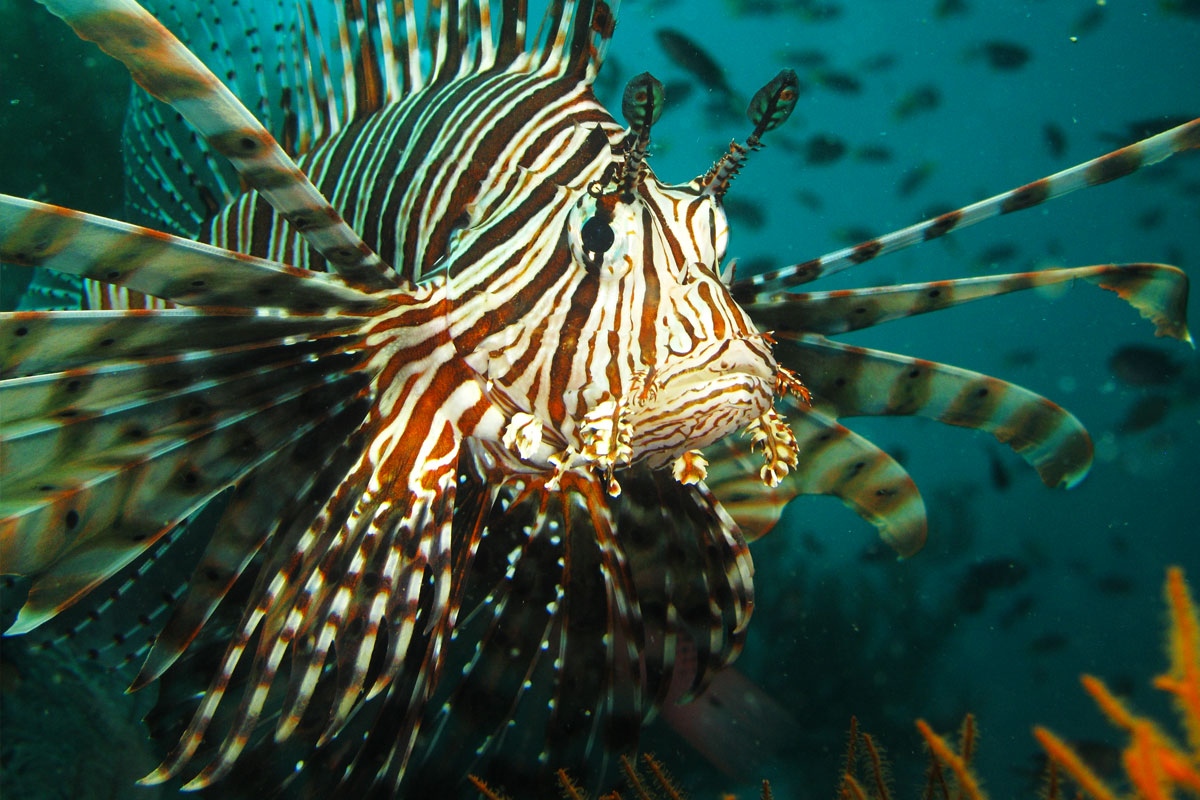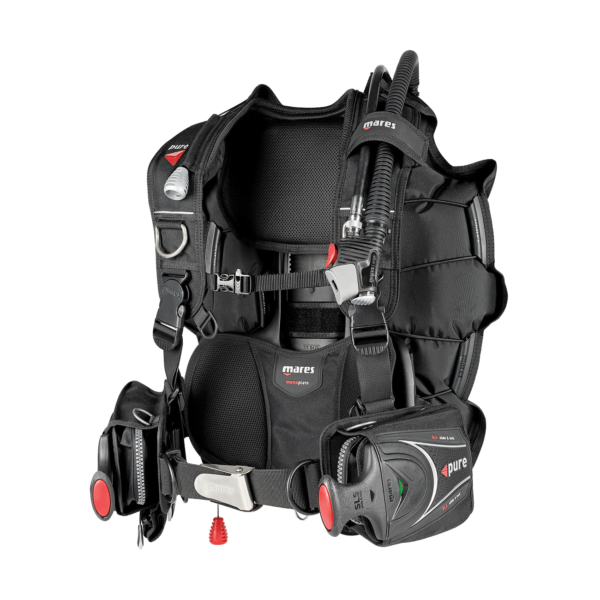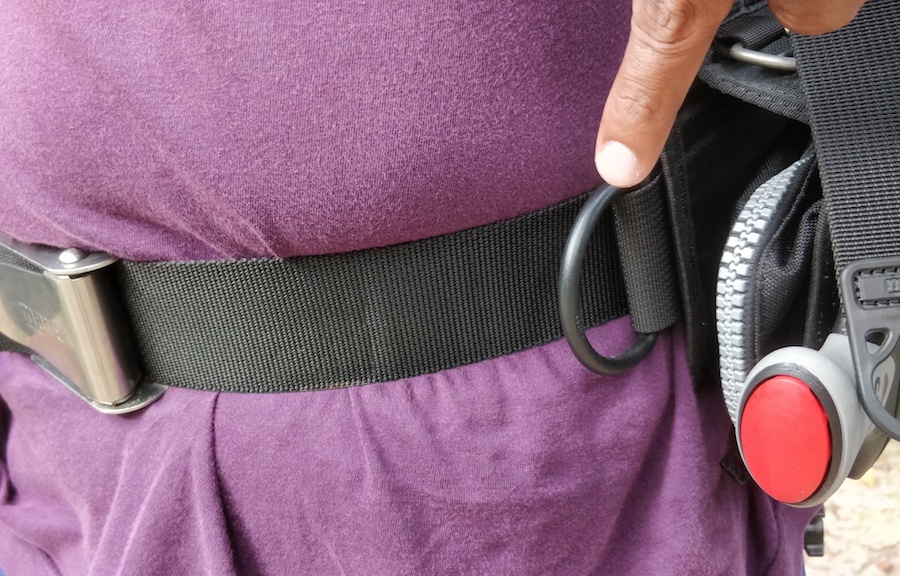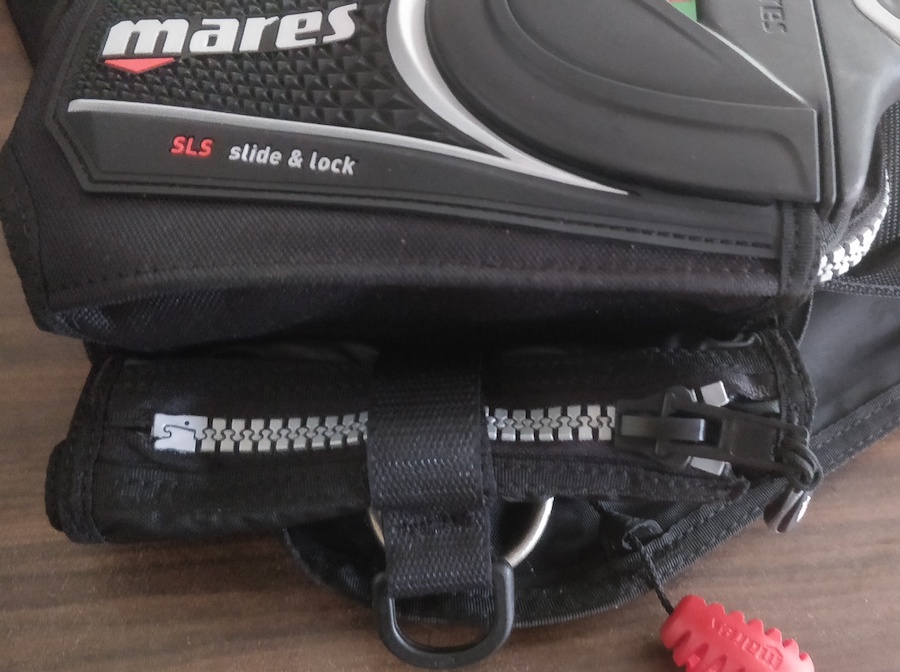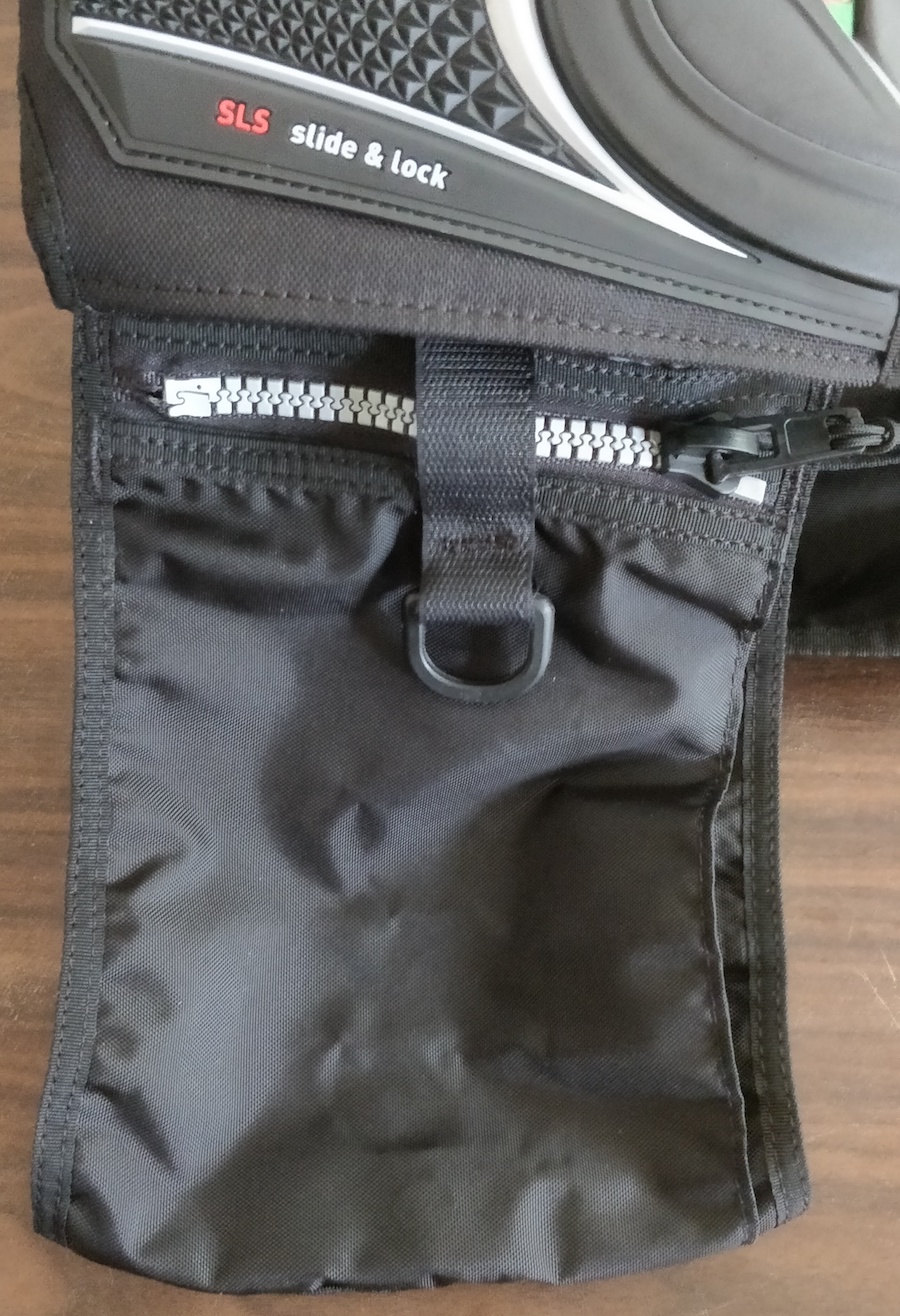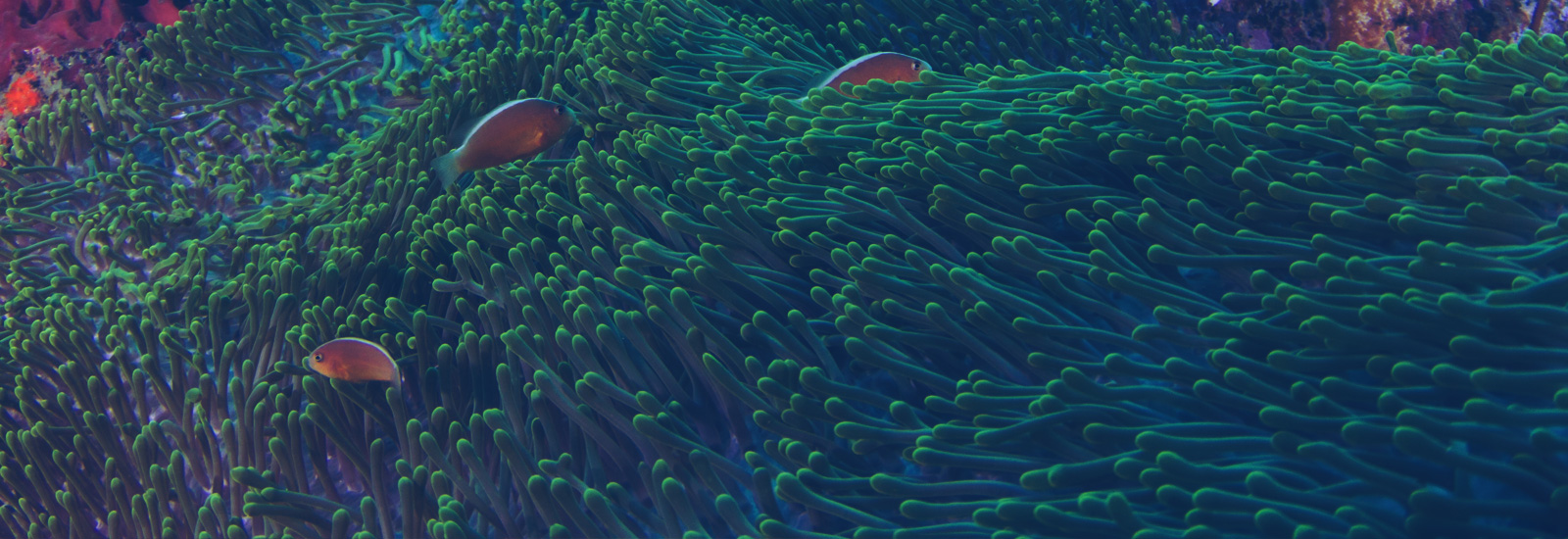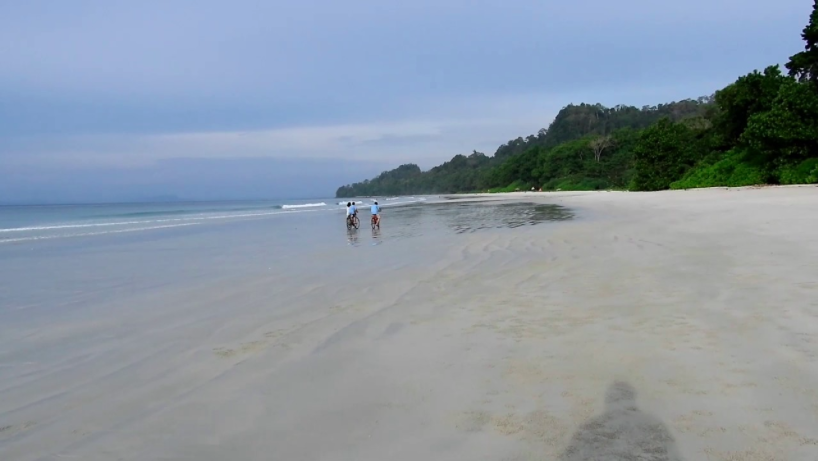Disclosure: The Chillproof Jacket and the green Rapid Dry top were requested by us so that we could do a review, and will be returned. All the other items referred to in the review are/were the personal property of Vinnie, which he purchased at full retail from shops in Thailand and Malaysia. As always, our gear reviews are opinionated and represent what we truly feel about the product – we aren’t trying to sell page views or advertising: we like playing around with gear and we want our fellow divers to get the best possible value for their money.
One benefit of working at a dive center is that I get to play with a lot of dive gear – both stuff that we try out to use at the dive center and stuff that we try out for sale. As a result, I have developed a deep-rooted religious aversion to paying retail for anything – after all, why should I, when I have access to the entire catalog of Mares, Aqualung and Scubapro to try out? Between them, pretty much all my diving needs are covered several times over. There are, however, a few products which I like so much that I am willing to make an exception. One of them are NOS Cressi Master Frog fins (seriously – if you know any for sale, please let me know. I have had breakups that were less painful than learning that Cressi discontinued these fins). Another is Sharkskin’s range of thermal protection gear.
Up-front alert: I am a fanboy. I’ve been using Sharkskin products for 7-8 years now and when I wore through my last one, I walked into a dive shop in Kuala Lumpur, slapped down my credit card and paid full retail for a new one. As such, I was super-excited to learn that Sharkskin is now available in India, which has prompted this article.

Anushka, one of our DMTs, happy and warm in her Sharkskin
WHAT IS SHARKSKIN?
Let’s get one thing out of the way – these are not really made of sharkskin (I know someone who got hate mail about this). So what are they? They are amazing, dear reader, that’s what they are. Amazing.
Sharkskin’s major selling point is what they call their “Chillproof” fabric. This is an innovative, technical piece of apparel which consists of 3 layers:
- An inner fleece layer that sits against your skin and wicks away moisture
- A middle windproof layer which prevents windchill (and if you have ever come up from a dive and shivered like crazy, you know how much windchill can affect your thermal peace of mind!)
- An outer, stretchable nylon/lycra blend which provides abrasion resistance and UV resistance, and is also water repellant, to shed splashes.
Supposedly, it provides the thermal properties of 2.5-3mm of neoprene – while also being neutrally buoyant (so it wont mess up your weighting), anti-microbial and also odor- and itch-resistant. No, it is definitely not your run-of-the-mill garment.
IS IT WORTH THE HYPE?
In case I was too subtle in my introduction, short answer: yes!
Anyone who has dived with me knows that I am a complete and utter wimp, and get cold very quickly (the days of cold water diving in a dry suit/dry hood/dry gloves seem to be very far away). If I am in the water for a couple of hours, I almost always wear a full length wetsuit, to avoid getting cold. And even on dives where I am ok in the water, coming out of the water is pretty much a guarantee of the shivers till I can take off the wetsuit, find a towel and put on a dry T-shirt. As a result, I end up wearing a wetsuit even in warm water – and wetsuits simply are Not Fun: they are a pain to put on, you need more weight to dive with a wetsuit and there are the post-micturation odor issues that would make even the Big Lebowski shake his head.
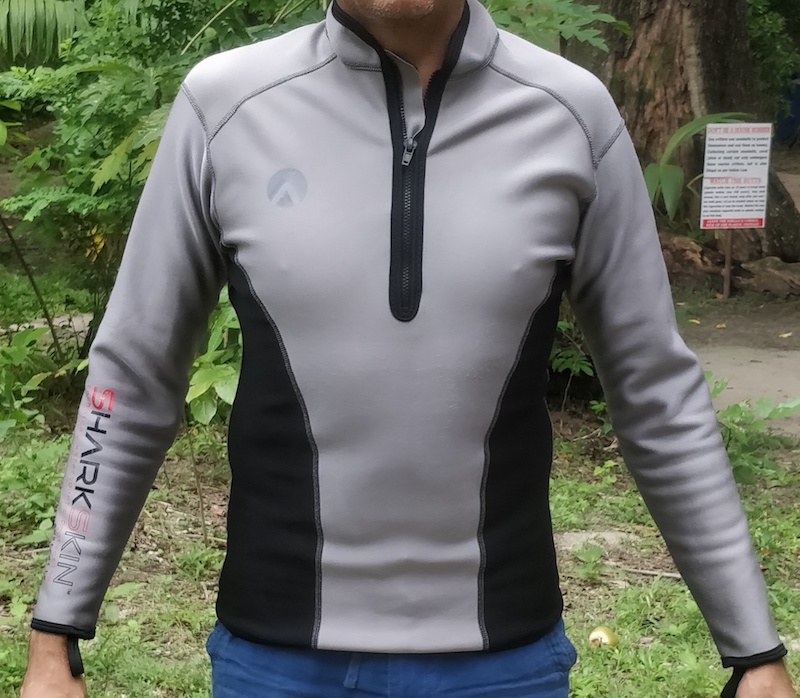
Vinnie posing with his Chillproof Climate Control LS
However, with Sharkskin jackets, I find that not only do I stay warmer in the water, I also stay warmer when I get out of the water. In practice, I have found that my threshold temperature for needing a wetsuit has down by 2 degrees compared to other neoprene jackets and vests that I have tried. In other words, where I would wear a wetsuit in water that is 28-29C, I now can manage with just a Sharkskin top and board shorts in waters down to 26-27C.
Doesnt sound like much, you say? Well, it means that instead of wearing a wetsuit all year long, now I only need to wear it 2-3 months a year. 9 months less of needing to wrestle in and out of a tight wetsuit every dive. 9 fewer months of being encumbered on each dive. 9 months of less weights, less air adjustments in my BCD and generally a lot more comfortable.
And in cooler (not as warm, let’s say) water, I can wear a Sharkskin under my wetsuit and extend the temperature range of my wetsuit by a few more degrees. So I am less likely to need a 5mm suit – in fact, ever since I got my first Sharkskin, I stopped using my 5mm suit.
What if you are not a wimp like me? Well, perhaps you dive in shorts and rash guard and only put on a full length wetsuit at the lower range of tropical temperatures – in this case, you may be able to replace your wetsuit entirely with a Sharkskin!
About the only somewhat negative thing I can say about them – I am not too wild about their hoods. I like my head to be warm and am used to diving with a 3mm hood all the time. The Sharkskin hood is a fair bit thinner and doesn’t keep me as warm as a regular hood. However, the flip side is that the Sharkskin hood is also a lot more comfortable – and for someone who has never tried a hood before, it’s a great way to gain additional warmth without the cloying sensation of a neoprene hood.
THE SHARKSKIN RANGE
If there is one thing Sharkskin doesn’t do too well, it is come up with sensible names for their products. It’s a fairly confusing mess which had me confused for the longest time (and still does), so let me try to demystify it for you.
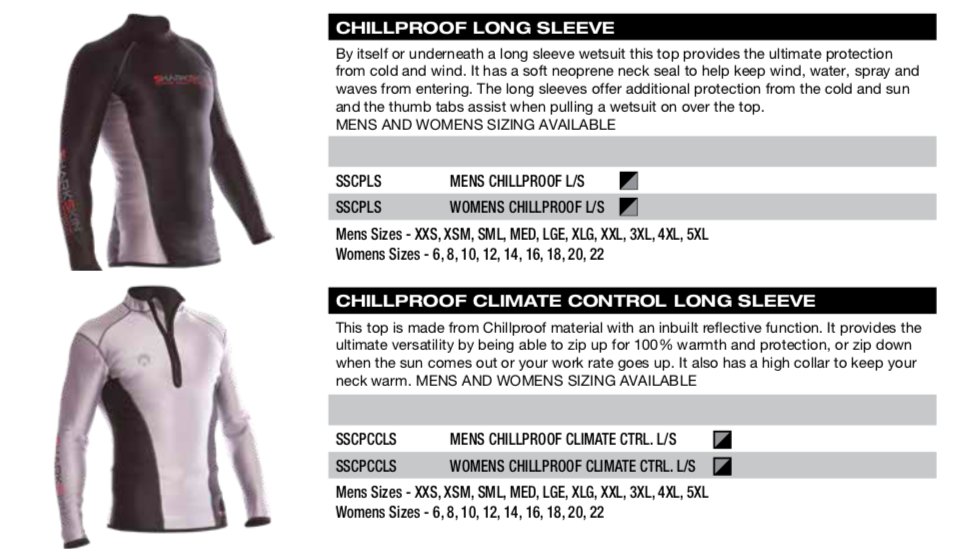
The core range is the Sharkskin ChillProof Long Sleeve, with a higher end ChillProof Climate Control variant (this has a silver outer layer, which prevents over-heating in the sun as you are kitting up to dive, for example).
I used to own the ChillProof long sleeve earlier and replaced with the Climate Control variant recently, and while I haven’t done any controlled testing, I do think I don’t get hot as much with this version when I am traveling to/from the dive site, for example. So the Climate Control part does seem to work, in my opinion.

The ChillProof LongSleeves also comes in a hooded variant – one of our current DMTs at the time of writing this article (who may be the only person who gets even colder than me) bought this and it has helped her tremendously with staying warm in the water. There is no Climate Control variant of the hooded jacket, however.
There is also a full-zip version, called the Chillproof Longsleeve Full Zip. As the name implies, this zips up and down entirely, giving you more options to regulate your body temperature. In water, you dive with the jacket fully or partially zipped up and on the boat, you unzip it to stay cool. In my opinion, the full zipper is an unnecessary complication for divers – at most, the quarter-zip on the Chillproof Climate Control is more than sufficient to make the unit easy to don/doff.

There is also a Chillproof Hooded Jacket- this jacket meant to be worn on the boat, before/after dives (or also when doing other activities that involve water exposure where warmth is a requirement).
It is a fairly common sight to see dive professionals packing fleece jackets on the boat to stay warm and avoid windchill between dives – but unlike regular fleece jackets, this puppy is designed to be exposed to water, courtesy of those three layers I mentioned earlier.

Next up is Sharkskin’s short sleeve/sleeveless range, which can be worn as stand-alone units or as base layers under a wetsuit (or a full sleeved Sharkskin jacket). There are three items here.
First is the Chillproof Short Sleeve, which is available without a hood only. If you need something a little lighter than a Fullsleeve ChillProof, this is the one for you. It can be worn stand-alone or as a layer under a wetsuit.
The next two items are primarily designed to be base layers – ChillProof Sleeveless Vests, without and with a hood. While you can wear them as a stand-alone unit, I would not recommend that if that is your primary usage: I used to own a ChillProof Sleeveless Vest With Hood, and found the lack of sleeves let a little more water into my torso than I would have preferred. For occasional use with shorts, it was fine – but if your goal is to buy something you can wear with shorts to replace a wetsuit, get a version with sleeves, in my opinion.
As base layers under a wetsuit, however, the Sleeveless Vests are fantastic. They are a lot more comfortable than neoprene or rubber-lined vests, and also feel a lot warmer against your skin. My old one is torn after years of use, and I will be getting another one to replace it.
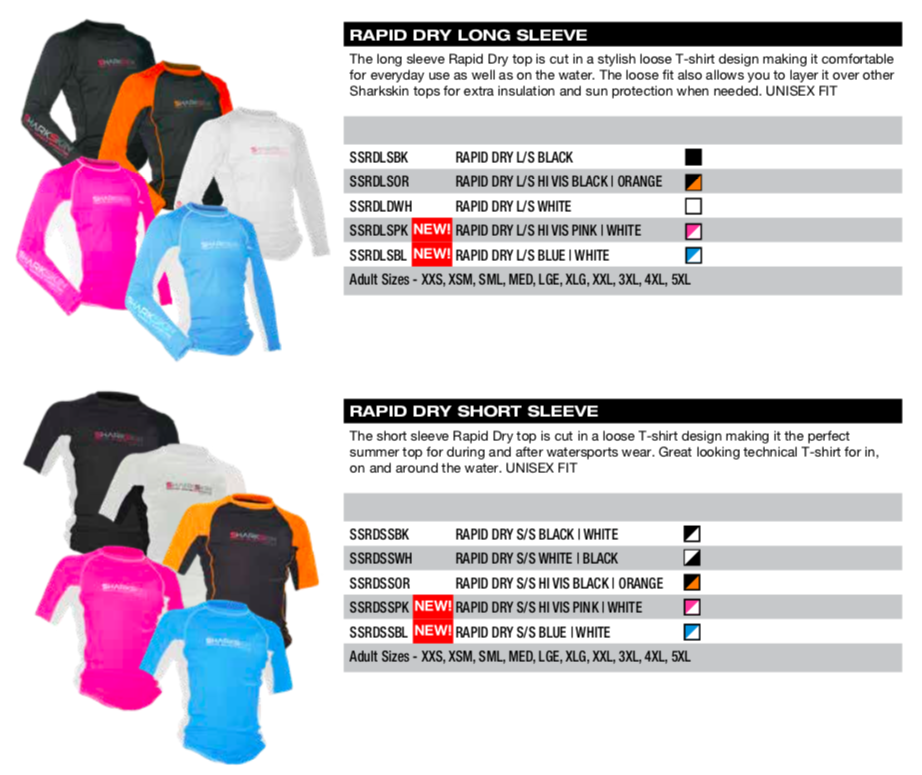
Lastly, we have Sharkskin’s answer to the lycra rash guard. It’s a loose-fitting top with thickness comparable to Lycra, but in a weave-style fabric which feels a lot more comfortable against the skin. I find most Lycra rashguards feel a little strange (almost sticky) against the skin, and also are prone to bunching and pulling at the joints if the sleeves are a little twisted. The Rapid Drys are significantly more comfortable and sit against your skin with the comfort that approaches that of cotton
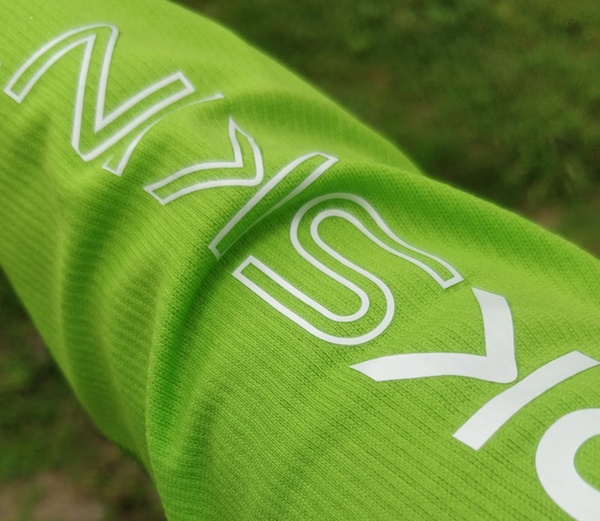
This is one item in their range with which I have not used in the water (the above comments were based on wearing one around on land). But based on my positive experiences with other Sharkskin models, I have just ordered one for myself (my third Sharkskin item and 7th overall, if you are keeping track). I will update the review once I have tried it on. Incidentally, there also appears to be a lime green model in the Rapid Dry, which is not show in the photo above – see below:

There are also other items (such as shorts), which I have omitted from the review, as they are designed primarily for kayaking and other surface activities.
THE ALTERNATIVES
There really are very few products that are directly comparable to Sharkskin. The typical lycra and neoprene rashguards dont have offer anywhere close to the same degree of comfort, warmth and favorable buoyancy characteristics.
Mares has recently released a range of products called the Fireskin, which utilizes similar principles in construction as the Sharkskin – as you would guess from the name, they are directly taking on Sharkskin with this range of products and the pricing is very competitive (actually, significantly cheaper than Sharkskin).
I have yet to try out a Fireskin unit in the water, but will do so soon and post a review of that.
THE BOTTOM LINE
Thermal protection is important for every diver: even in warm water and even for divers who don’t get cold often. There is a big difference between “not getting cold” and “being comfortably warm”, for one – and one that has a tremendous impact on how much you enjoy your dives. And here, Sharkskin is a product that you should know about.
For those who don’t get cold easily, it can actually replace the 3mm wetsuit as the default thermal protection unit of choice. I would recommend a ChillProof Long Sleeve as a good option to try out – it is easily warmer than a 3mm neoprene shorty, in my opinion.
For those who do get cold easily, a Sharkskin Sleeveless vest under a wetsuit significantly increases the usable range in which you can wear your wetsuit. A ChillProof Sleeveless Vest (with or without a hood) is a great way to add extra warmth to your wetsuit without increasing buoyancy.
And if you are the type who gets cold between dives, the ChillProof Hooded Jacket can replace a regular fleece jacket
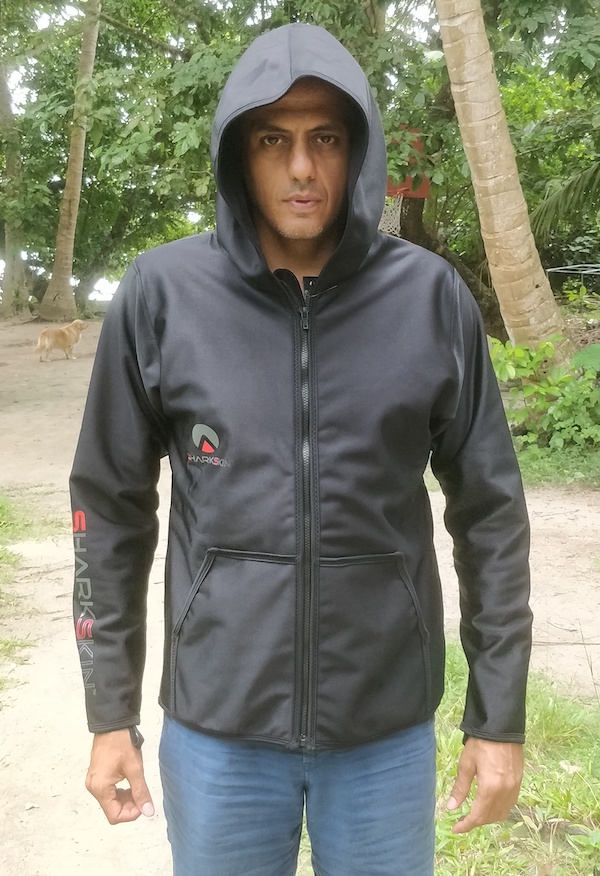
Darth Vinnie looking for his missing red lightsaber
No, Sharkskin products are not cheap. You can actually buy a 3mm wetsuit for slightly less than the cost of a Sharkskin ChillProof Long Sleeve top (and the cost of that Sharkskin Hooded Jacket above makes me want to cry). But they are fantastic and do a great job, which makes them worth the money to me (enough for me to buy several units at full retail).
As those of you who follow my recommendations know, I rarely recommend top-of-the-line stuff unless there is a significant reason to do so. In general, I feel that functional value in most goods typically resides in the middle of the range: at the entry level, one gives up too many features to get the lowest price. At the top of the range, one gets a lot of neat features which are nice to have, but not essential: and whether or not those features are worth the premium is a personal decision. Sharkskin is one of the few premium products that I recommend whole-heartedly for everyone – you get a Better Product for your money, and in the long run, that’s a more economical purchase.
And it is not just me – when I got my first Sharkskin, a fellow instructor liked it so much that he pretty much made me pass it on to him. I was also relieved of my other Sharkskin, a ChillProof Sleeveless, by another instructor on similar grounds. So now I keep my current Sharkskins in my room and not in the dive shop – now that it is sold in the country, no one is taking mine from me: they can jolly well order their own damn piece.
And speaking of ordering their own damn pieces: in the week between my writing this review and it getting posted online, 3 of our dive staff and 3 of our DMTs/Instructor candidates have all ordered Sharkskin products. And I have also gotten myself a Rapid Dry long sleeve top.
Diveindia sells a full range of Sharkskin jackets – our top recommendations are the ChillProof Long Sleeves (both regular and Climate Control version) for people looking for a better alternative to neoprene rash guards or shorty wetsuits, and the ChillProof Sleeveless Vest (with or without the hood) as something to layer under your existing wetsuit.


